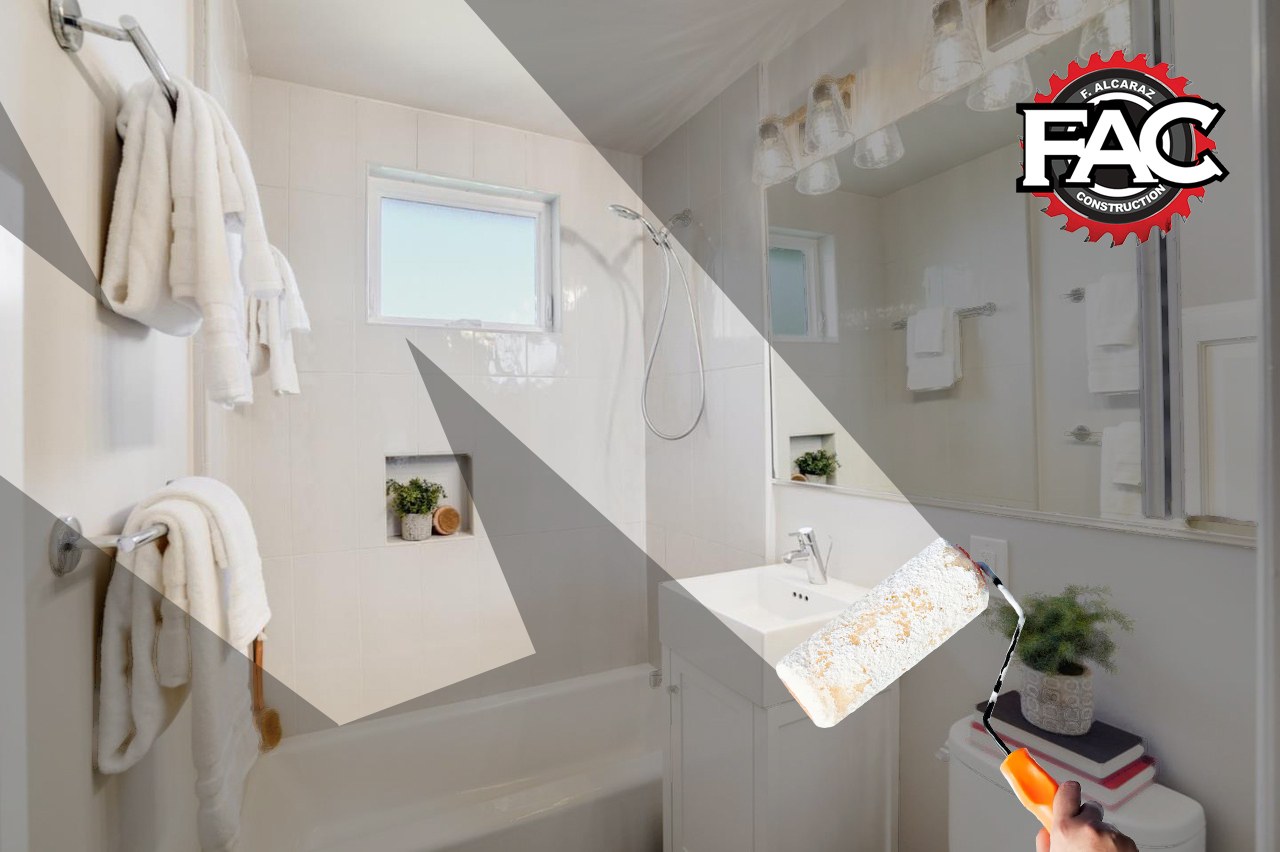In this article

Protect your Bathroom from Mold and Mildew
Transforming your bathroom into a luxurious oasis involves paying attention to details that are often overlooked. One such detail that can make a big difference in the overall look and feel of your bathroom is the type of paint you use on your walls and ceiling. But choosing the right paint is not just about aesthetics, it’s also about protecting your bathroom from mold and moisture damage. Bathrooms are naturally damp spaces, and the constant exposure to moisture makes them a breeding ground for mold and mildew. In this article, we will provide you with all the information you need to protect your bathroom walls and ceiling against mold and moisture by using mold-resistant paint.
Protecting your bathroom walls and ceiling against mold and moisture is crucial to maintaining a healthy and comfortable living space. Moisture can cause mold and mildew to grow, which can lead to health problems, unpleasant odors, and damage to your home. According to an article published by the Centers For Disease Control and Prevention, Titled “Basic Facts about Mold and Dampness” “Exposure to damp and moldy environments may cause a variety of health effects or none at all. Some people are sensitive to mold. For these people, exposure to molds can lead to symptoms such as stuffy nose, wheezing, red or itchy eyes, or skin. Some people, such as those with allergies to molds or with asthma, may have more intense reactions”.
Painting your bathroom walls and ceiling with paint that is designed to resist moisture and mold is one of the ways to prevent these issues. In addition, if left untreated, mold and moisture can damage your home’s structural integrity, leading to costly repairs.

Why Regular Paint Won’t Cut It
Regular paint may work in other parts of your home, but it won’t do the job in your bathroom. Bathrooms are exposed to high levels of humidity, which can cause significant damage to walls and ceilings over time. Regular paint lacks the durability and mold and moisture resistance required to withstand the conditions in a bathroom, making it more prone to peeling, cracking, and mold growth.

What is a Mold-Resistant Paint?
Mold-resistant paint is a type of paint that contains special ingredients that make it resistant to mold and mildew growth. These ingredients include mildewcide. According to Roy Berendsohn, Senior Home Editor, Popular Mechanics “Along with being an insecticide, the product is a virucide, bactericide (and inhibits bacterial growth), sanitizer and deodorant, mildewcide, and fungicide”. which is not found in regular paint. This makes this type of paint an excellent choice for bathrooms or other areas that are prone to moisture and dampness, as mold and mildew can easily grow in these conditions.

The Benefits of Mold-Resistant Paint
Investing in high-quality mold-resistant paint for your bathroom walls and ceiling offers several advantages over other types of surface treatments. This paint creates an effective barrier that prevents water from penetrating the underlying material. This helps to reduce the risk of mold growth since moisture is unable to penetrate walls and ceilings, leading to damage and potential health hazards.
Using mold-resistant paint can help prevent the growth of mold and mildew on walls, which not only looks unsightly but can also have negative health effects, especially for people with respiratory problems. According to CDC, Traditional cleaning methods such as wiping with bleach may not always be effective in preventing the growth of mold and mildew on walls, which is why using this type of paint is a smart preventative measure.
The waterproofing capability of this type of paint creates a barrier that makes it easier to clean your bathroom. As water and cleaning solutions can be wiped away without damaging the paint.

Consider these Factors Before Choosing Mold-Resistant Paint
Before opting to use mold-resistant paint, there are several key factors that you need to consider. These include the extent of mildew on your wall and the thoroughness of cleaning the area.

The Extent of Mildew Growth on your Wall
If you are dealing with small patches of mildew, the use of mold-resistant paint may be a reasonable solution. However, if there is a significant amount of mold growth, it would be wise to investigate further before proceeding with a paint job. According to the Environmental Protection Agency, if the affected area is larger than 10 square feet, professional assistance is necessary. A qualified contractor or remediation service can help you determine if the issue is more extensive than you initially thought.

Cleaning the Area Thoroughly
Further, it is essential to thoroughly clean the space before applying mold-resistant paint. Failure to do so could result in the mildew resurfacing or spreading. According to the CDC, Mold formation can be eliminated from rigid surfaces through the use of commercial-grade products, a mixture of soap and water, or a bleach solution comprising a maximum of one cup (equivalent to eight ounces) of bleach blended with a gallon of water to effectively eliminate mold on surfaces. Never mix bleach with other household cleaners, particularly ammonia, to avoid any hazardous chemical reactions.
Once you have thoroughly cleaned the area, commit to keeping it extra clean and dry for a while. This will allow you to observe any changes in the mildew growth and determine whether using mold-resistant paint is necessary. If you do decide to use mold-resistant paint, it is crucial to continue cleaning the area regularly going forward. This will help maximize the effectiveness of the paint and prevent any future mold growth.
Remember, when it comes to mold growth, prevention is key. Minimize the likelihood of needing to use mold-resistant paint, By keeping your home clean and dry.

Is using a Mold-Resistant Paint Worth It?
It is important for homeowners to recognize the significance of mold-resistant paint. Whether or not it is worth the investment. Mold not only looks unappealing but it can also present a serious health hazard. Therefore, it is crucial to find the most effective solution for preventing its growth.
It is evident that mold-resistant paint has the potential to minimize mold growth and prevent future mold infestations. However, it is important to understand that this paint does not fully eradicate the problem but only delays its onset. It is still important to maintain cleanliness and proper ventilation to inhibit mold growth.
Before deciding to use mold-resistant paint, individuals should assess the level of mold growth in their surroundings. Investing in this paint may not be necessary if the growth is minimal and can be easily removed. However, if mold growth is persistent, then this can be a viable solution to the problem.
Mold-resistant paint may be more expensive than common paints. But it is well worth the health benefits and savings on future repair costs. By utilizing this type of paint, individuals can ensure a safer and healthier living environment for themselves and their loved ones.
In conclusion, mold-resistant paint is important in preventing mold growth and should be considered for those experiencing persistent mold issues. With proper maintenance and hygiene practices, this paint can provide a long-term solution to the problem.
In this article





